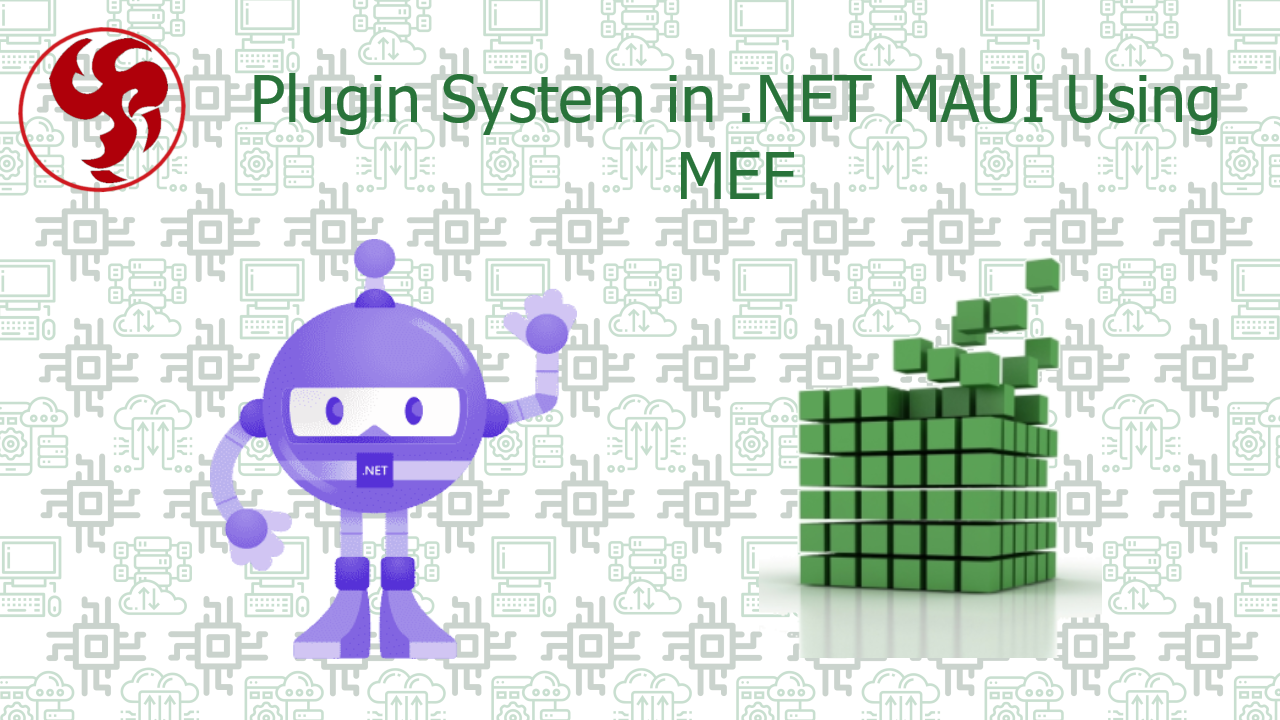Plugin System in .NET MAUI Using MEF
In modern app development, extensibility is key. Whether you're building an enterprise solution, a white-labeled product, or an app that supports third-party integrations, a plugin-based architecture allows you to add features dynamically without modifying the core application.
In this guide, you'll learn how to implement a plugin system in .NET MAUI using the Managed Extensibility Framework (MEF). We'll cover:
Why use a plugin system?
Setting up MEF in .NET MAUI
Defining plugin contracts
Implementing and loading plugins dynamically
Advanced techniques (metadata, hot-reloading, DI integration)
1. Why Use a Plugin System?
A plugin architecture provides several benefits:
✅ Modularity – Features are isolated, making the app easier to maintain.
✅ Extensibility – Third-party developers (or internal teams) can add functionality without modifying the core app.
✅ A/B Testing & Feature Flags – Enable/disable plugins at runtime.
✅ Dynamic Updates – Load new features without redeploying the entire app.
✅ White-Labeling – Customize app behavior per client by swapping plugins.
2. Project Setup
Solution Structure
For a clean architecture, we’ll structure our solution as follows:
MauiApp– The main .NET MAUI application.PluginContracts(.NET Standard) – Defines interfaces for plugins.SamplePlugin(.NET Standard) – A sample plugin implementation.
Install MEF
MEF (System.Composition) is the official Microsoft library for extensibility.
In all projects (MAUI, PluginContracts, SamplePlugin)
3. Defining the Plugin Contract
The PluginContracts project defines the interfaces that all plugins must implement.
IPlugin Interface
Optional: Metadata for Plugins
We can enrich plugins with metadata (e.g., version, author, dependencies).
4. Implementing a Plugin
Plugins must:
Reference
PluginContracts.Be decorated with
[Export]for MEF discovery.
Example: HelloPlugin
Adding Metadata
5. Loading Plugins Dynamically
MEF scans assemblies for [Export] attributes and instantiates them.
PluginLoader Class
Handling MAUI-Specific Challenges
iOS Restrictions: Dynamic loading is restricted; consider using
Assembly.Loadinstead ofLoadFrom.Android Assets: Plugins must be copied to a writable directory before loading.
6. Using Plugins in the MAUI App
Loading and Executing Plugins
7. Advanced Techniques
A. Metadata-Based Filtering
B. Hot-Reloading Plugins
Watch a directory for new
.dllfiles.Use
AssemblyLoadContextfor unloading (requires .NET 6+).
C. Dependency Injection (DI) Integration
D. Remote Plugins (Download & Load)
8. Security Considerations
🔒 Validate Plugins:
Use strong-naming or code signing.
Run plugins in a restricted
AssemblyLoadContext.
🔒 Sandboxing:
- Consider running untrusted plugins in a separate process.
9. Deep Dive into Hot-Reloading Plugins
Hot-reloading plugins allows your .NET MAUI app to dynamically load, unload, and update plugins at runtime without restarting the application. This is especially useful for:
Development efficiency (test plugins without full rebuilds)
Live updates (deploy new plugin versions remotely)
A/B testing (swap features dynamically)
9.1 How Hot-Reloading Works
To achieve hot-reloading, we need:
✅ File watcher – Monitor a directory for plugin changes.
✅ AssemblyLoadContext – Load/unload assemblies dynamically (.NET 6+).
✅ Dependency tracking – Ensure no memory leaks from unloaded plugins.
9.2 Implementing Hot-Reloading
Step 1: Set Up a File Watcher
Step 2: Use AssemblyLoadContext for Unloading
Step 3: Integrate with MEF
Step 4: Full Hot-Reload Flow
9.3 Handling Dependencies
Problem:
If a plugin depends on a shared library, unloading it may fail if other plugins use the same dependency.
Solution:
Isolate dependencies per plugin using
AssemblyLoadContext.Use
AssemblyDependencyResolver(.NET Core 3.0+) to resolve private dependencies.
9.4 Testing Hot-Reloading
Run the MAUI app.
Modify a plugin DLL (e.g., update
HelloPlugin.csand rebuild).Copy the new DLL to the watched plugins folder.
Observe logs – The app should detect changes and reload the plugin.
9.5 Limitations & Workarounds
| Issue | Solution |
|---|---|
| iOS restrictions | Use Assembly.Load (no unloading) or AOT-compiled plugins. |
| Memory leaks | Ensure all plugin references are released before unloading. |
| Dependency conflicts | Isolate plugins with AssemblyLoadContext. |
Conclusion
By leveraging MEF, you can transform your .NET MAUI app into a modular, extensible platform that supports:
Third-party plugins
Dynamic feature loading
A/B testing & white-labeling
This approach is ideal for enterprise apps, SaaS platforms, or apps requiring runtime customization.
